 W
WThe Sioux Wars were a series of conflicts between the United States and various subgroups of the Sioux people which occurred in the later half of the 19th century. The earliest conflict came in 1854 when a fight broke out at Fort Laramie in Wyoming, when Sioux warriors killed 31 American soldiers in the Grattan Massacre, and the final came in 1890 during the Ghost Dance War.
 W
WThe "American Ranch Massacre" occurred in 1865 during the Colorado War. Cheyenne and Sioux warriors attacked a ranch near present-day Sterling, Colorado where they killed all of the male settlers and took three captives.
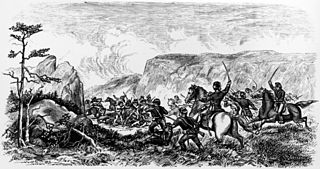 W
WThe Battle of Ash Hollow, also known as the Battle of Blue Water Creek or the Harney Massacre, was an engagement of the First Sioux War, and fought on September 2 and 3, 1855 between United States Army soldiers under Brig. Gen. William S. Harney and a band of the Brulé Lakota along the Platte River in present-day Garden County, Nebraska. In the 20th century, the town of Lewellen, Nebraska, was developed here as a railroad stop.
 W
WThe Battle of Fish Creek, fought April 24, 1885 at Fish Creek, Saskatchewan, was a major Métis victory over the Canadian forces attempting to quell Louis Riel's North-West Rebellion. Although the reversal was not decisive enough to alter the ultimate outcome of the conflict, it was convincing enough to persuade Major General Frederick Middleton to temporarily halt his advance on Batoche, where the Métis would later make their final stand.
 W
WThe Battle of Mole Lake was a battle fought in 1806 between Sioux and Chippewa warriors. It was fought over wild rice beds located in Forest County, Wisconsin, United States.At the time, the area of the battle was part of the Indiana Territory.
 W
WThe Battle of Beecher Island, also known as the Battle of Arikaree Fork, was an armed conflict between elements of the United States Army and several of the Plains Native American tribes in September 1868. Beecher Island, on the Arikaree River, then known as part of the North Fork of the Republican River, near present-day Wray, Colorado, was named afterwards for Lieutenant Fredrick H. Beecher, an army officer killed during the battle.
 W
WThe Battle of Big Mound was a United States Army victory in July 1863 over the Santee Sioux Indians allied with some Yankton, Yanktonai and Teton Sioux in Dakota Territory.
 W
WThe Colorado War was an Indian War fought in 1864 and 1865 between the Southern Cheyenne, Arapaho, and allied Brulé and Oglala Sioux peoples versus the U.S. army, Colorado militia, and white settlers in Colorado Territory and adjacent regions. The Kiowa and the Comanche played a minor role in actions that occurred in the southern part of the Territory along the Arkansas River. The Cheyenne, Arapaho, and Sioux played the major role in actions that occurred north of the Arkansas River and along the South Platte River, the Great Platte River Road, and the eastern portion of the Overland Trail. The United States government and Colorado Territory authorities participated through the 1st Colorado Cavalry Regiment, often called the Colorado volunteers. The war was centered on the Colorado Eastern Plains, extending eastward into Kansas and Nebraska.
 W
WThe Battle of Dead Buffalo Lake was a skirmish in July 1863 in Dakota Territory between United States army forces and Santee, Yankton, Yanktonai and Teton Sioux. The Indians attempted to capture the pack train of the army and retired from the field when they were unsuccessful.
 W
WThe Fetterman Fight, also known as the Fetterman Massacre or the Battle of the Hundred-in-the-Hands or the Battle of a Hundred Slain, was a battle during Red Cloud's War on December 21, 1866, between a confederation of the Lakota, Cheyenne, and Arapaho tribes and a detachment of the United States Army, based at Fort Phil Kearny, Wyoming. The U.S. military mission was intended to protect travelers on the Bozeman Trail.
 W
WThe Battle of Grand Coteau or the Battle of Grand Coteau du Missouri was a battle that took place between a Metis buffalo hunting party from St. François Xavier, led by Jean Baptiste Falcon and the Cut Head (Pabaksa) Yanktonai (Ihanktonwanna), Dakota, led by Chief Medicine (Sacred) Bear, on July 13 to 14, 1851. The Métis were victorious. It was the last major battle between the two groups.
 W
WThe Grattan Massacre, also known as the Grattan Fight, was the opening engagement of the First Sioux War, fought between United States Army and Lakota Sioux warriors on August 19, 1854. It occurred east of Fort Laramie, Nebraska Territory, in present-day Goshen County, Wyoming.
 W
WThe Indian Wars Refought is a 1914 American drama silent film that depicts several historical battles of The Indian Wars. The film was directed by Theodore Wharton and stars William F. Cody, Nelson Appleton Miles and Charles King, all of whom participated in the actual battles depicted in the movie. The feature was produced by the Buffalo Bill Historical Picture Company and Essanay Film Mfg. Company. The film was released in August 1914, but according to modern sources, it only played in Denver and New York City because of pressure from the government, which disapproved of its content because it showed the Indians in a somewhat favorable light. It is now considered a lost film.
The Battle of Julesburg took place on January 7, 1865 near Julesburg, Colorado between 1,000 Cheyenne, Arapaho, and Lakota Indians and about 60 soldiers of the U.S. army and 40 to 50 civilians. The Indians defeated the soldiers and over the next few weeks plundered ranches and stagecoach stations up and down the valley of the South Platte River
 W
WThe Battle of Kathio, or Battle of Izatys, was an oral tradition of the Chippewa reporting a battle fought in 1750 between Chippewas and the Sioux at the village of Kathio, or Izatys, on the Rum River next to Mille Lacs Lake.
 W
WThe Battle of Killdeer Mountain took place during Brig. Gen. Alfred Sully's expedition against the Sioux Indians in Dakota Territory July 28–29, 1864. The location of the battleground is in modern Dunn County, North Dakota. With a total of more than 4,000 soldiers involved, Sully's expedition was the largest ever carried out by the U.S. army against Indians.
 W
WThe Battle of the Little Bighorn, known to the Lakota and other Plains Indians as the Battle of the Greasy Grass and also commonly referred to as Custer's Last Stand, was an armed engagement between combined forces of the Lakota, Northern Cheyenne, and Arapaho tribes and the 7th Cavalry Regiment of the United States Army. The battle, which resulted in the defeat of U.S. forces, was the most significant action of the Great Sioux War of 1876. It took place on June 25–26, 1876, along the Little Bighorn River in the Crow Indian Reservation in southeastern Montana Territory.
 W
WThe Battle of Little Muddy Creek, also known as the Lame Deer Fight, was fought on May 7–8, 1877, by United States soldiers and scouts against a village of Miniconjou Lakota and Northern Cheyenne. The battle occurred near Little Muddy Creek in Montana Territory, near present-day Lame Deer, Rosebud County.
 W
WThe Battle of Mud Springs took place February 4–6, 1865, in Nebraska between the U.S. army and warriors of the Lakota Sioux, Cheyenne, and Arapaho tribes. The battle was inconclusive, although the Indians succeeded in capturing some Army horses and a herd of several hundred cattle. Mud Springs is located 8 mi northwest of Dalton, Nebraska, and is today a National Historic Site.
 W
WThe Battle of Powder River, also known as the Reynolds Battle, occurred on March 17, 1876, in Montana Territory, United States. The attack on a Cheyenne Indian encampment by Colonel Joseph J. Reynolds initiated the Great Sioux War of 1876. Although destroying a large amount of Indian property, the attack was poorly carried out and probably solidified Lakota Sioux and northern Cheyenne resistance to the U.S. attempt to force them to sell the Black Hills and live on a reservation.
 W
WThe Battle of the Rosebud took place on June 17, 1876, in the Montana Territory between the United States Army and its Crow and Shoshoni allies against a force consisting mostly of Lakota Sioux and Northern Cheyenne Indians during the Great Sioux War of 1876. The Cheyenne called it the Battle Where the Girl Saved Her Brother because of an incident during the fight involving Buffalo Calf Road Woman. General George Crook's offensive was stymied by the Indians, led by Crazy Horse, and he awaited reinforcements before resuming the campaign in August.
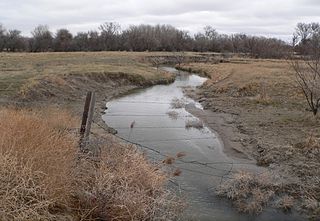 W
WThe Battle of Rush Creek took place February 8–9, 1865, between about 185 soldiers of the U.S. Army and 1,000 warriors of the Lakota Sioux, Cheyenne, and Arapaho tribes. The inconclusive battle took place 4 mi southeast of present-day Broadwater, Nebraska, along both banks of the North Platte River.
 W
WThe Battle of Slim Buttes was fought on September 9–10, 1876, in the Great Sioux Reservation between the United States Army and Miniconjou Sioux during the Great Sioux War of 1876. It marked the first significant victory for the army since the stunning defeat of General George Custer at the Battle of Little Bighorn in June.
 W
WThe Spirit Lake Massacre was an attack by a Wahpekute band of Santee Sioux on scattered Iowa frontier settlements during a severe winter. Suffering a shortage of food, the renegade chief Inkpaduta led 14 Sioux against the settlements near Okoboji and Spirit lakes in the northwestern territory of Iowa near the Minnesota border, in revenge of the murder of Inkpaduta's brother, Sidominadotah, and Sidominadotah's family by Henry Lott. The Sioux killed 35-40 settlers in their scattered holdings, took four young women captive, and headed north. The youngest captive, Abbie Gardner, was kept a few months before being ransomed in early summer. It was the last Native American attack on settlers in Iowa, but the events increased tensions between the Sioux and settlers in the Minnesota Territory. Nearly 30 years after the events, in 1885 Gardner-Sharp published her memoir, History of the Spirit Lake Massacre and Captivity of Miss Abbie Gardner, which was reprinted several times in small editions. It was one of the last captivity narratives written of European Americans' being held by Native Americans. In 1891, Gardner-Sharp purchased the primitive family cabin and returned home. For the last 30 years of her life, she subsisted on the modest earnings from her book and souvenir sales. The town erected an historical monument to commemorate the attack. The State of Iowa now maintains the park and Abbie Gardner Sharp home site.
 W
WThe Battle of Stony Lake was the third and last engagement of Henry Hastings Sibley's 1863 campaign against the Santee, Yankton, Yanktonai and Teton Sioux in Dakota Territory. Following the battle, the Indians fought delaying actions against Sibley until their women and children had successfully crossed the Missouri River. Sibley then gave up his chase of them.
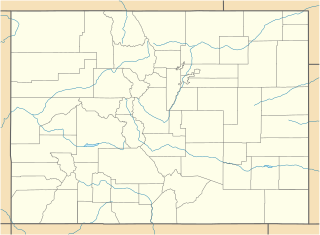 W
WThe Battle of Summit Springs, on July 11, 1869, was an armed conflict between elements of the United States Army under the command of Colonel Eugene A. Carr and a group of Cheyenne Dog Soldiers led by Tall Bull, who was killed during the engagement. The US forces were assigned to retaliate for a series of raids in north-central Kansas by Chief Tall Bull's Dog Soldiers band of the Cheyenne. The battle happened south of Sterling, Colorado in Washington County near the Logan/Washington county line.
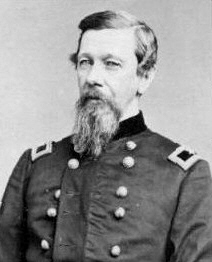 W
WThe Battle of the Badlands was fought in Dakota Territory, in what is now western North Dakota, between the United States army led by General Alfred Sully and the Lakota, Yanktonai, and the Dakota Indian tribes. The battle was fought August 7–9, 1864 between what are now Medora and Sentinel Butte, North Dakota. It was an extension of the conflict begun in the Dakota War of 1862. Sully successfully marched through the badlands encountering only moderate resistance from the Sioux.
 W
WThe Wagon Box Fight was an engagement on August 2, 1867, in the vicinity of Fort Phil Kearny, Wyoming, during Red Cloud's War. A party of 26 US Army soldiers and 6 civilians were attacked by several hundred Lakota Sioux warriors. Although outnumbered, the soldiers were armed with newly supplied breech-loading Springfield Model 1866 rifles and Lever Action Henry rifles, and had a defensive wall of wagon boxes to protect them. They held off the attackers for hours with few casualties, although they lost a large number of horses and mules driven off by the raiders.
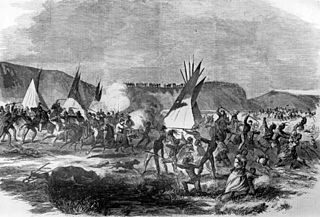 W
WThe Battle of Whitestone Hill was the culmination of the 1863 operations against the Sioux or Dakota people in Dakota Territory. Brigadier General Alfred Sully attacked a village September 3–5, 1863. The Native Americans in the village included Yanktonai, Santee, and Teton (Lakota) Sioux. Sully killed, wounded, or captured 300 to 400 Sioux, including women and children, at a cost of about 60 casualties. Sully would continue the conflict with another campaign in 1864.
 W
WThe Battle of Wolf Mountain, also known the Battle of the Wolf Mountains, Miles's Battle on the Tongue River, the Battle of the Butte, Where Big Crow Walked Back and Forth, and called the Battle of Belly Butte by the Northern Cheyenne, occurred January 8, 1877, in southern Montana Territory between soldiers of the United States Army against Lakota Sioux and Northern Cheyenne warriors during the Great Sioux War of 1876. It was fought about four miles southwest of modern-day Birney, along the Tongue River. In 2001, the Wolf Mountains Battlefield was listed on the National Register of Historic Places. It was raised to the status of National Historic Landmark in 2008.
 W
WThe Wounded Knee Massacre, also known as the Battle of Wounded Knee, was a domestic massacre of nearly three hundred Lakota people, by soldiers of the United States Army. It occurred on December 29, 1890, near Wounded Knee Creek on the Lakota Pine Ridge Indian Reservation in the U.S. state of South Dakota, following a botched attempt to disarm the Lakota camp. The previous day, a detachment of the U.S. 7th Cavalry Regiment commanded by Major Samuel M. Whitside intercepted Spotted Elk's band of Miniconjou Lakota and 38 Hunkpapa Lakota near Porcupine Butte and escorted them 5 miles (8.0 km) westward to Wounded Knee Creek, where they made camp. The remainder of the 7th Cavalry Regiment, led by Colonel James W. Forsyth, arrived and surrounded the encampment. The regiment was supported by a battery of four Hotchkiss mountain guns.